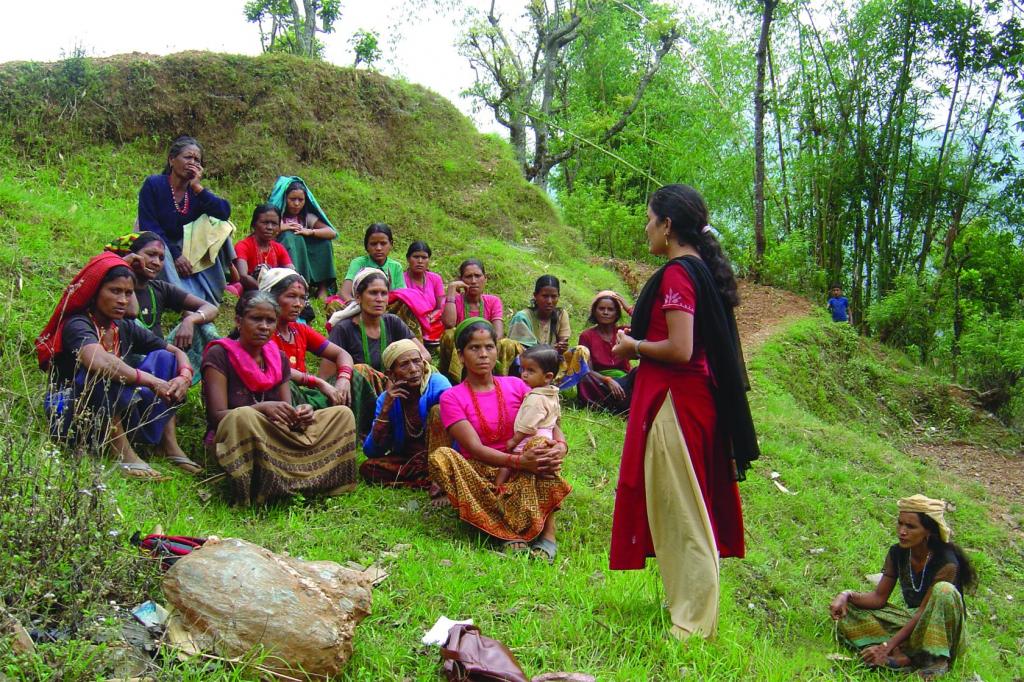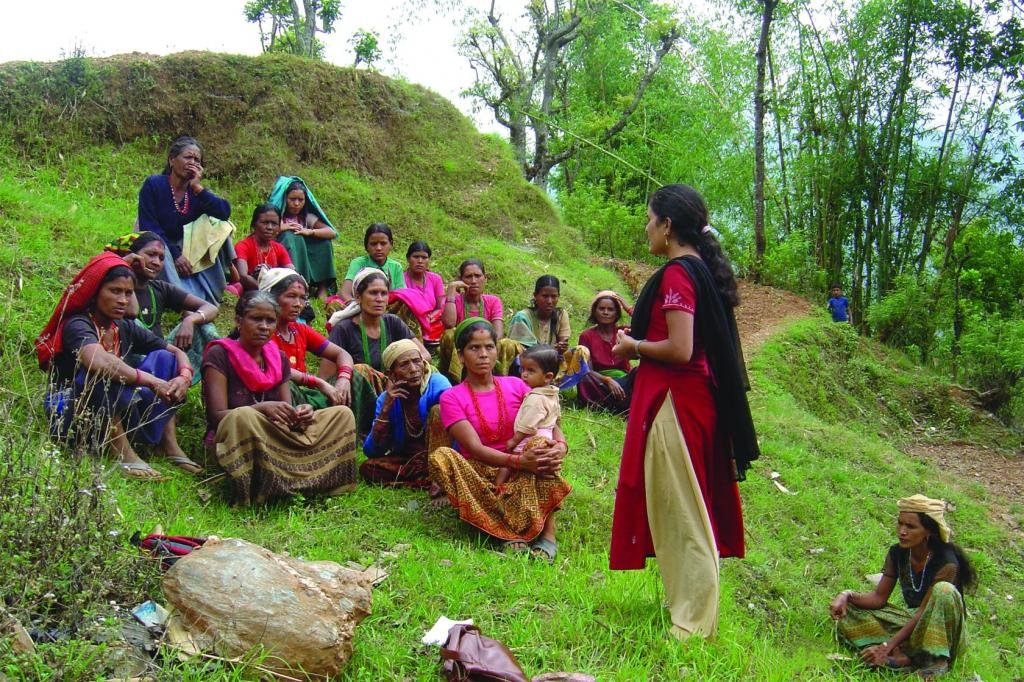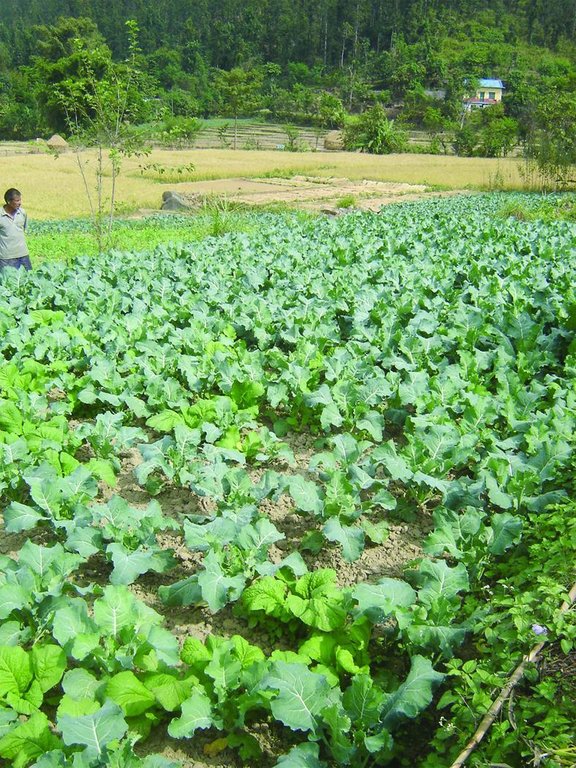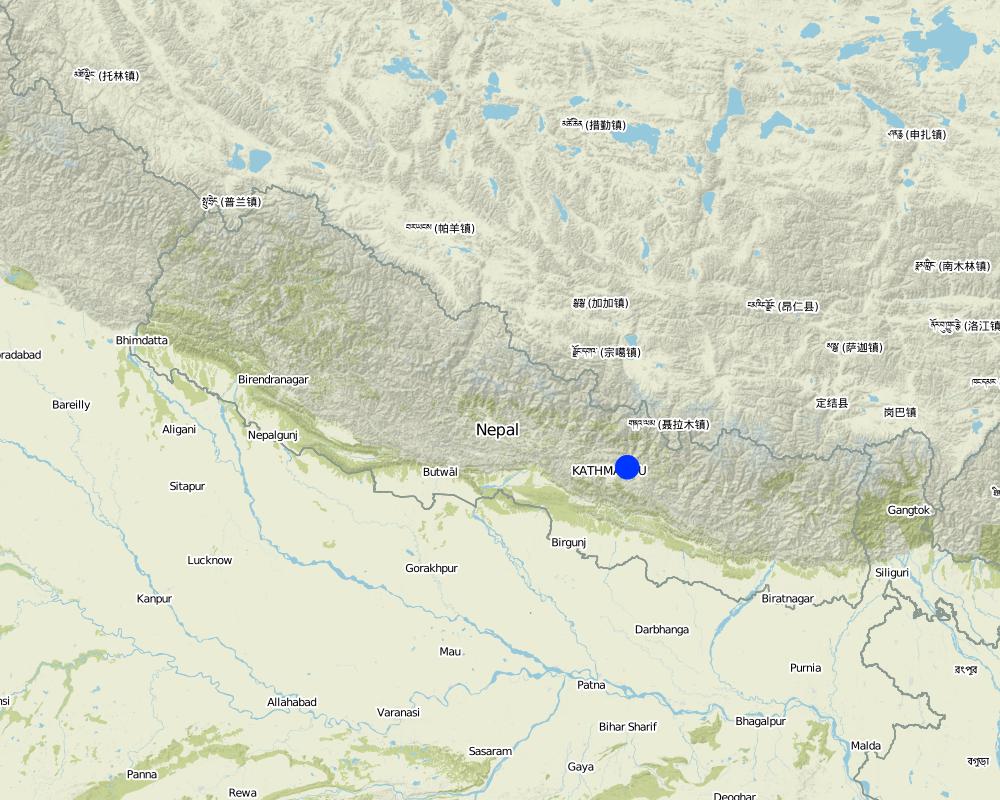Farmer-led experimentation [ប្រទេសនេប៉ាល់]
- ការបង្កើត៖
- បច្ចុប្បន្នភាព
- អ្នកចងក្រង៖ Richard Allen
- អ្នកកែសម្រួល៖ –
- អ្នកត្រួតពិនិត្យ Laura Ebneter
Krishak ko aguwai ma garine parikshan (Nepali)
approaches_2559 - ប្រទេសនេប៉ាល់
ពិនិត្យមើលគ្រប់ផ្នែក
ពង្រីកមើលទាំងអស់ បង្រួមទាំងអស់1. ព័ត៌មានទូទៅ
1.2 ព័ត៌មានលម្អិតពីបុគ្គលសំខាន់ៗ និងស្ថាប័នដែលចូលរួមក្នុងការវាយតម្លៃ និងចងក្រងឯកសារនៃវិធីសាស្ត្រផ្សព្វផ្សាយ
អ្នកជំនាញឯកទេស SLM:
Soil Management Directorate
+977 1 5520314
Department of Agriculture
Harihar Bhawan, Lalitpur
ប្រទេសនេប៉ាល់
អ្នកជំនាញឯកទេស SLM:
Team Leader Sustainable Sustainable Soil Management Programme (SSMP)
+977 1 5543591
ssmp@helvetas.org.np
Sustainable Soil Management Programme (SSMP)
GPO Box 688, Kathmandu
ប្រទេសនេប៉ាល់
ឈ្មោះគម្រោងដែលបានចងក្រងឯកសារ/ វាយតម្លៃលើវិធីសាស្ត្រផ្សព្វផ្សាយ (បើទាក់ទង)
Sustainable Soil Management Programme, Nepal (SSMP)ឈ្មោះអង្គភាពមួយ (ច្រើន) ដែលបានចងក្រងឯកសារ/ វាយតម្លៃលើវិធីសាស្ត្រផ្សព្វផ្សាយ (បើទាក់ទង)
HELVETAS (Swiss Intercooperation)1.3 លក្ខខណ្ឌទាក់ទងទៅនឹងការប្រើប្រាស់ទិន្នន័យដែលបានចងក្រងតាមរយៈវ៉ូខេត
អ្នកចងក្រង និង(បុគ្គលសំខាន់ៗ)យល់ព្រមទទួលយកនូវលក្ខខណ្ឌនានាទាក់ទងទៅនឹងការប្រើប្រាស់ទិន្នន័យដែលបានចងក្រងតាមរយៈ វ៉ូខេត:
បាទ/ចា៎
1.4 ការយោងមួយ (ច្រើន) ទៅលើ (កម្រង) បញ្ជីសំណួរនៃបច្ចេកទេស SLM
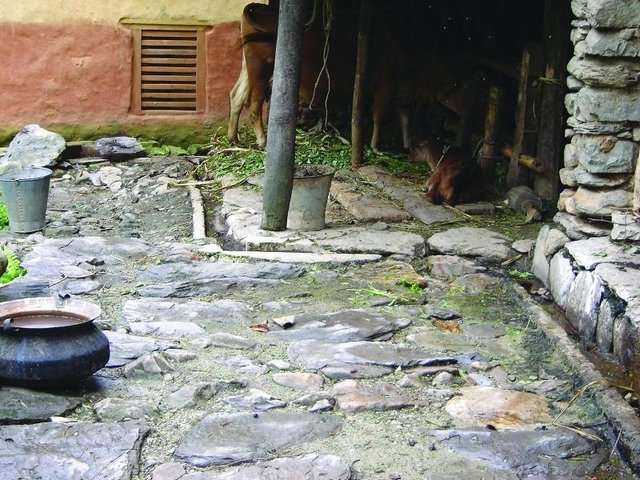
Improved cattleshed for urine collection [ប្រទេសនេប៉ាល់]
Collection of cattle urine in improved cattle sheds for use as liquid manure and organic pesticide
- អ្នកចងក្រង៖ Richard Allen
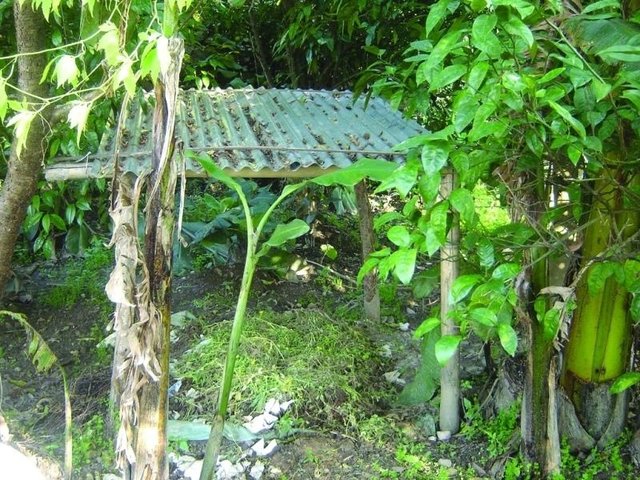
Improved compost preparation [ប្រទេសនេប៉ាល់]
Improved compost preparation using a range of biomass and waste to produce high value fertiliser
- អ្នកចងក្រង៖ Richard Allen
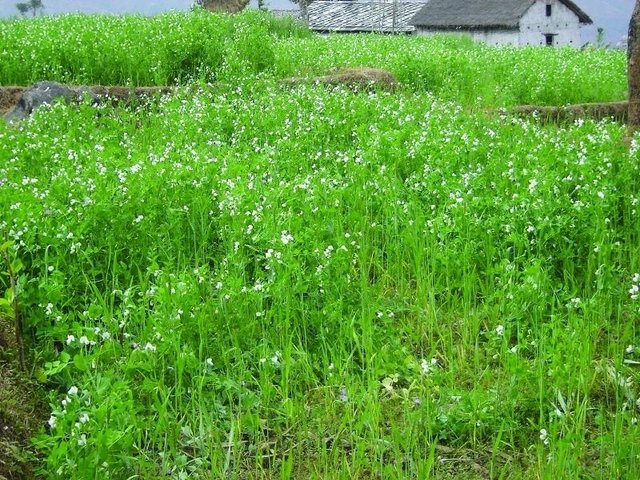
Legume integration [ប្រទេសនេប៉ាល់]
Integration of leguminous crops as intercrops on terrace risers or as relay crops
- អ្នកចងក្រង៖ Richard Allen
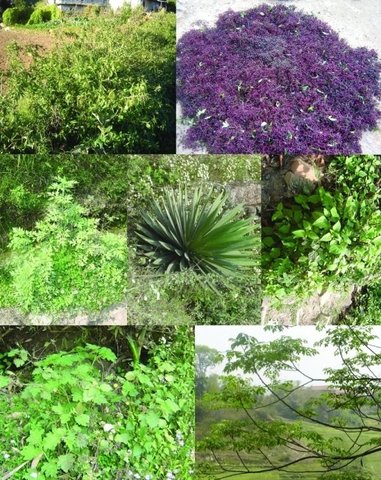
Organic pest management [ប្រទេសនេប៉ាល់]
Promotion of botanical pesticides for organic pest management and liquid manure
- អ្នកចងក្រង៖ Richard Allen
2. ការពណ៌នាអំពីវិធីសាស្ត្រផ្សព្វផ្សាយ SLM
2.1 ពណ៌នាសង្ខេបខ្លីពីវិធីសាស្ត្រផ្សព្វផ្សាយ
Participatory technology testing and adaptation through farmer-led experiments
2.2 ពណ៌នាលម្អិតពិវិធីសាស្ត្រផ្សព្វផ្សាយ
ពណ៌នាលម្អិតពិវិធីសាស្ត្រផ្សព្វផ្សាយ:
Farmer-led experimentation is a type of action research initiated and carried out by farmers in their own fields. This approach enables farmers to identify technological options suited to local agroecological and socioeconomic conditions. The farmer-led experimentation process is taken up within existing farmer groups. This approach is closely related to the 'participatory innovation development' and the 'participatory technology development' approaches as discussed in Kolff et al. (2005). Simple experiments are usually replicated in five to ten farmers' fields per group. Generally, the whole of each experimental plot from each field is harvested and the yield recorded. Field implementation, group visits, and observations are carried out by the farmers themselves. The processing of results is done in groups together with the support staff from the facilitating organisation. These farmers are very likely to adopt tested technologies that are shown to be better for meeting their needs. The results are also used by support staff and shared with other organisations, and provide input for dissemination through farmer-to-farmer diffusion.
Farmers play a leading role in all steps of the process, starting from problem identification to planning, implementation, and evaluation of the experiments. This ensures that farmers are the driving force in the research process and not mere recipients of research findings that have been generated elsewhere. The detailed implementation plan is discussed within the groups and individual and collective responsibilities are assigned. The experimental site, individual implementing farmers, group visits, and results-sharing meetings are decided on by group consensus. Some observations are recorded by the implementing farmers. Promising innovations are then identified based on the collective evaluation of the tested treatments. Technical and other facilitation support is provided by organisations active in the area.
2.3 រូបភាពនៃវិធីសាស្ត្រផ្សព្វផ្សាយ
2.5 ប្រទេស/តំបន់/ទីតាំងកន្លែង ដែលវិធីសាស្ត្រផ្សព្វផ្សាយត្រូវបានអនុវត្តន៍
ប្រទេស:
ប្រទេសនេប៉ាល់
តំបន់/រដ្ឋ/ខេត្ត:
Midhills
Map
×2.7 ប្រភេទនៃវិធីសាស្ត្រផ្សព្វផ្សាយ
- ផ្អែកលើគម្រោង/កម្មវិធី
2.8 គោលបំណង/ទិសដៅសំខាន់នៃវិធីសាស្ត្រផ្សព្វផ្សាយ
Local farmers collectively solving problems by identifying and using the most appropriate local solutions. Local farmers designing, testing and disseminating alternative technologies adapted to local conditions. Strengthening joint learning by farmers and development actors.
The SLM Approach addressed the following problems: The common issues concerning farmers in growing crops include pests and diseases, yield decline, inappropriate crop varieties, and the introduction of new varieties. Rather than technicians providing farmers with ready-made solutions to their problems (that may or may not work), farmer-led experimentation allows farmers to carry out their own trials to try and solve specific problems.
2.9 លក្ខខណ្ឌអនុញ្ញាត ឬរារាំងការអនុវត្តន៍បច្ចេកទេសដែលស្ថិតនៅក្រោមវិធីសាស្រ្តផ្សព្វផ្សាយ
ភាពអាចរកបាននៃធនធានហិរញ្ញវត្ថុ និងសេវាកម្ម
- រារាំង
Lack of money for technical support
Treatment through the SLM Approach: Collaborative approach amongst farmers from the same settlements
បរិបទនៃស្ថាប័ន
- រារាំង
Dysfunctional government extension system
Treatment through the SLM Approach: Reliance on local human resources and farmer to farmer collaboration
ចំណេះដឹងស្តីពី SLM និងការទទួលបានការគាំទ្រផ្នែកបច្ចេកទេស
- រារាំង
Problems related to agricultural production and soil fertility
Treatment through the SLM Approach: esting and adaptation of technologies to local conditions using local human and natural resources
3. ការចូលរួម និងតួនាទីរបស់ភាគីពាក់ព័ន្ធ
3.1 អ្នកពាក់ព័ន្ធដែលបានចូលរួមក្នុងវិធីសាស្ត្រផ្សព្វផ្សាយ និងតួនាទីរបស់ពួកគេ
- អ្នកប្រើប្រាស់ដីក្នុងតំបន់/សហគមន៍
3.2 ការចូលរួមរបស់អ្នកប្រើប្រាស់ដីក្នុងតំបន់/ សហគមន៍ក្នុងតំបន់ក្នុងដំណាក់កាលផ្សេងគ្នានៃវិធីសាស្រ្តផ្សព្វផ្សាយ
| ការចូលរួមរបស់អ្នកប្រើប្រាស់ដីក្នុងតំបន់/សហគមន៍ក្នុងតំបន់ | សូមបញ្ជាក់នរណាត្រូវបានចូលរួម ព្រមទាំងពណ៌នាសកម្មភាពទាំងនោះ | |
|---|---|---|
| ការចាប់ផ្តើម/ការលើកទឹកចិត្ត | អន្តរកម្ម | participatory discussions and exercises, field visits, farm maps, farming and labour calendar, Activities: Identification of topics for experiment based on needs and priority, Identification of technological options (indigenous and external), Farmers developing simple and appropriate experiments, De |
| ការរៀបចំផែនការ | គ្មាន | |
| ការអនុវត្តន៍ | អន្តរកម្ម | follow-up visits, discussions, Activities: Farmers implement according to the design for comparison with a control (= existing practice), Farmers note relevant observations on recording sheet. Farmers note other important observations based on their needs and interests, Technical support and discuss |
| ការត្រួតពិនិត្យ និងវាយតម្លៃ | អន្តរកម្ម | field visit to experimental site by other farmers, participatory discussion and evaluation Activities: Experimenting farmers and other farmers jointly discuss and evaluate based on direct observations of the trial and from the record sheet, Discussion on the lessons learned and identifying possible |
| Research | គ្មាន |
3.4 ការសម្រេចចិត្តលើការជ្រើសរើសបច្ចេកទេស SLM
សូមបញ្ជាក់តើអ្នកណាជាអ្នកបានសម្រេចចិត្តក្នុងការជ្រើសរើសបច្ចេកទេសដើម្បីយកមកអនុវត្តន៍:
- អ្នកប្រើប្រាស់ដីដោយខ្លួនឯងផ្ទាល់ (គំនិតផ្តួចផ្តើមដោយខ្លួនឯង)
ចូរពន្យល់:
Made collectively by farmers in group facilitated by organisation working with them.
Decisions on the method of implementing the SLM Technology were made by by land users* alone (self-initiative / bottom-up). Made by farmers in group
4. ជំនួយបច្ចេកទេស ការកសាងសមត្ថភាព និងការគ្រប់គ្រងចំណេះដឹង
4.1 ការកសាងសមត្ថភាព/ បណ្តុះបណ្តាល
តើវគ្គបណ្តុះបណ្តាលបានផ្តល់ឱ្យអ្នកប្រើប្រាស់ដី/អ្នកពាក់ព័ន្ធផ្សេងៗទៀតដែរឬទេ?
បាទ/ចា៎
សូមបញ្ជាក់តើអ្នកណាត្រូវបានបណ្តុះបណ្តាល:
- អ្នកប្រើប្រាស់ដី
4.3 ការពង្រឹងសមត្ថភាពស្ថាប័ន (ការអភិរឌ្ឍន៍អង្គភាព)
តើស្ថាប័នទាំងអស់ត្រូវបានបង្កើតឡើង ឬពង្រឹងសមត្ថភាពតាមរយៈវិធីសាស្ត្រផ្សព្វផ្សាយដែរ ឬទេ?
- បាទ/ច៎ា ជាមធ្យម
សូមបញ្ជាក់ថាតើស្ថាប័នត្រូវបានពង្រឹង ឬបង្កើតឡើងនៅត្រឹមកម្រិតណា(ច្រើន)?
- ថ្នាក់មូលដ្ឋាន
សូមផ្តល់ព័ត៌មានបន្ថែមទៀតឱ្យបានលម្អិត:
Technical support provided by project
4.4 ការត្រួតពិនិត្យ និងវាយតម្លៃ
តើការត្រួតពិនិត្យ និងវាយតម្លៃគឺជាផ្នែកមួយនៃវិធីសាស្ត្រដែរឬទេ?
បាទ/ចា៎
មតិយោបល់:
bio-physical aspects were monitored by land users through observations
technical aspects were monitored by land users through observations
economic / production aspects were monitored by land users through observations
area treated aspects were monitored by land users through observations
land users involved aspects were monitored by land users through observations
management of Approach aspects were monitored by land users through observations
There were several changes in the Technology as a result of monitoring and evaluation: The adoption of certain technologies has occurred as a result of farmer-led experimentation. For example, a farmer-led trial of two varieties of groundnut (local and B4), in Ghadgaon, Surkhet, led to farmers starting to grow the B4 variety in an area where previously only local varieties had been growing
5. ថវិកា និងសម្ភារៈឧបត្ថម្ភពីខាងក្រៅ
5.1 ថវិកាប្រចាំឆ្នាំសម្រាប់ផ្សព្វផ្សាយ SLM
មតិយោបល់ (ឧ. ប្រភពសំខាន់នៃមូលនិធិ/ម្ចាស់ជំនួយចំបង):
Approach costs were met by the following donors: local community / land user(s) (local resources, labour, land): 50.0%; other (Dev. project(inputs, external resources)): 50.0%
5.2 ការគាំទ្រផ្នែកហិរញ្ញវត្ថុ / សម្ភារៈដែលបានផ្តល់ទៅឱ្យអ្នកប្រើប្រាស់ដី
តើអ្នកប្រើប្រាស់ដីបានទទួលការគាំទ្រផ្នែកហិរញ្ញវត្ថ/សម្ភារៈសម្រាប់ការអនុវត្តន៍បច្ចេកទេសដែរឬទេ:
បាទ/ចា៎
ប្រសិនបាទ/ច៎ា សូមបញ្ជាក់ប្រភេទ(ច្រើន)នៃការគាំទ្រ លក្ខខណ្ឌ និងអ្នកផ្តល់ឱ្យ(ច្រើន):
Provided by the project for testing purposes
5.3 សូមបញ្ជាក់ពីធាតុចូលត្រូវបានផ្តល់បដិភាគ (រួមទាំងកម្លាំងពលកម្ម)
ប្រសិនបើកម្លាំងពលកម្មធ្វើដោយអ្នកប្រើប្រាស់ដី តើវាជាធាតុចូលដ៏សំខាន់មួយដែរ ឬទេ:
- ដោយស្ម័គ្រចិត្ត
6. ការវិភាគរកផលប៉ះពាល់ និងសេចក្តីសន្និដ្ឋាន
6.1 ផលប៉ះពាល់នៃវិធីសាស្ត្រផ្សព្វផ្សាយ
តើវិធីសាស្ត្រផ្សព្វផ្សាយជួយអ្នកប្រើប្រាស់ដីដើម្បីអនុវត្តន៍ និងថែទាំបច្ចេកទេស SLM?
- ទេ
- បាទ/ច៎ា បន្តិចបន្តួច
- បាទ/ច៎ា ជាមធ្យម
- បាទ/ច៎ា បានខ្លាំង
Great impacts on soil fertility and yields have been reported after the adoption of sustainable soil management tested through farmer-led experimentation.
Did other land users / projects adopt the Approach?
- ទេ
- បាទ/ច៎ា បន្តិចបន្តួច
- បាទ/ច៎ា ជាមធ្យម
- បាទ/ច៎ា បានខ្លាំង
Several farmers in the project area have started to do farmer-led experiments on their own, including on intercropping different vegetables and spices, and on urine application through drip irrigation
6.3 សកម្មភាពផ្សព្វផ្សាយដែលប្រកបដោយចីរភាព
តើអ្នកប្រើប្រាស់ដីអាចធ្វើឱ្យមានចីរភាពនូវអ្វីដែលត្រូវបានអនុវត្តន៍តាមរយៈវិធីសាស្ត្រផ្សព្វផ្សាយដែរឬទេ(ដោយពុំមានការគាំទ្រពីអ្នកខាងក្រៅ)?
- បាទ/ចា៎
ប្រសិនបាទ/ច៎ា សូមរៀបរាប់ថាធ្វើយ៉ាងម៉េច:
Some farmers are implementing the approach on their own initiative. This is possible because of the low costs and limited technical requirements of the approach. Farmers exposed to the approach will be able to apply the approach again to problems that arise in their fields without the need to consult outside agencies.
6.4 ភាពខ្លាំង/ គុណសម្បត្តិនៃវិធីសាស្ត្រផ្សព្វផ្សាយ
| ភាពខ្លាំង/ គុណសម្បត្តិ/ ឱកាស ទស្សនៈរបស់បុគ្គលសំខាន់ៗ |
|---|
| The approach serves both as a local test for suitability and adaptation potential as well as for demonstrating an already tested technology. |
| Once farmers are exposed to the approach, they can apply it on their own initiative. This is possible because of the low costs and technical requirements of the approach. |
| Experiments are conducted on the basis of farmers' priorities and according to local conditions. This means that farmers develop ownership of the experiments and the derived results. |
6.5 ភាពខ្សោយ/ គុណវិបត្តិនៃវិធីសាស្ត្រ និងរកដំណោះស្រាយ
| ភាពខ្សោយ/ គុណវិបត្តិ/ ហានិភ័យក្នុងទស្សនៈរបស់បុគ្គលសំខាន់ៗ | តើបច្ចេកទេសទាំងនោះបានដោះស្រាយបញ្ហាដូចម្តេច? |
|---|---|
| Experiments are not carried out in a scientifically rigorous way and therefore only have limited scientific value for evaluating technologies. | if scientific proof is required, farmer-led experiments should be closely supported by technicians (per se not a farmer-led experiment anymore!) |
| Documentation of the activities and results for wider sharing is often poor and inadequate | clear guidelines are needed for documentation with clear instructions on what, when, and how to record important information. This is necessary so that the results can be more widely used. |
| In some cases a lack of research equipment for better documentation and observation inhibits better understanding. |
7. ឯកសារយោង និងវេបសាយ
7.1 វិធីសាស្ត្រ/ ប្រភពនៃព័ត៌មាន
- តាមការចុះទីវាល ការស្រាវជ្រាវនៅទីវាល
- ការសម្ភាសន៍ជាមួយអ្នកប្រើប្រាស់ដី
7.2 ឯកសារយោងដែលបានចេញផ្សាយ
ចំណងជើង អ្នកនិពន្ធ ឆ្នាំ ISBN:
SSMP (2001) Implementation Guideline on Farmer Led Experimentation (in Nepali). Kathmandu: Sustainable Soil Management Programme
មានប្រភពមកពីណា? ថ្លៃដើមប៉ុន្មាន?
SSMP
ចំណងជើង អ្នកនិពន្ធ ឆ្នាំ ISBN:
Paudel, C.L.; Regmi, B.D.; Schulz, S. (2005) - Participatory Innovation Development - Experiences of the Sustainable Soil Management Programme
ចំណងជើង អ្នកនិពន្ធ ឆ្នាំ ISBN:
..In Kolff, A.; van Veldhuizen, L.; Wettasinha, C. (eds) Farmer-centred Innovation Development - Experiences and Challenges from South Asia, pp. 109-126. Bern:
មានប្រភពមកពីណា? ថ្លៃដើមប៉ុន្មាន?
SSMP
ការតភ្ជាប់ និងម៉ូឌុល
ពង្រីកមើលទាំងអស់ បង្រួមទាំងអស់ការតភ្ជាប់

Improved cattleshed for urine collection [ប្រទេសនេប៉ាល់]
Collection of cattle urine in improved cattle sheds for use as liquid manure and organic pesticide
- អ្នកចងក្រង៖ Richard Allen

Improved compost preparation [ប្រទេសនេប៉ាល់]
Improved compost preparation using a range of biomass and waste to produce high value fertiliser
- អ្នកចងក្រង៖ Richard Allen

Legume integration [ប្រទេសនេប៉ាល់]
Integration of leguminous crops as intercrops on terrace risers or as relay crops
- អ្នកចងក្រង៖ Richard Allen

Organic pest management [ប្រទេសនេប៉ាល់]
Promotion of botanical pesticides for organic pest management and liquid manure
- អ្នកចងក្រង៖ Richard Allen
ម៉ូឌុល
គ្មានម៉ូឌុល


